Way back in “ye olden days” of the mid-2000s, I was still a wide-eyed, fresh-faced backpacker looking to travel the world. The crazier and more outlandish the adventure or destination, the better. I ticked off a lot of epic things from my bucket list in the ensuing years: Swimming with Great Whites in Mexico, kayaking among glaciers in Antarctica, and making a week-long pilgrimage through a thousand years of history in rural Japan. But one thing that eludes me to this day is road-tripping the Pan-American Highway. Thanks to the Darién Gap, that trip may never get checked off my list. I’m just not that crazy.
The Pan-American Highway is an epic 19,000-mile route that connects Prudhoe Bay, Alaska, to the southernmost tip of South America in Ushuaia, Argentina. It’s continuous except for one small section missing along the southern border of Panama, often referred to as one of the most inhospitable places on the planet — this is the Darién Gap. It’s 66 roadless miles of impossibly dense, mountainous jungle and swamp filled with heavily armed paramilitary guerillas, drug traffickers, and some of the world’s most deadly creatures covering the border of Panama and Colombia.
In an article for the Council on Foreign Relations, Jean Gough, a Regional Director for UNICEF, sums it up: “Deep in the jungle, robbery, rape, and human trafficking are as dangerous as wild animals, insects, and the absolute lack of safe drinking water.”
The environmental impact on the area and the sheer cost of building roads through it have thwarted any previous attempts. Others are concerned that “the Gap” is a natural barrier against drugs, disease, and undocumented migrants flowing freely into North America and the U.S.
The first-ever successful vehicle expedition through the Darién Gap was led by British army officer Gavin Thompson. His team of six started in Alaska, driving all the way to Panama in a newly created Range Rover. Hitting the Darién Gap, he brought in a team of 64 engineers and scientists to hack their way through the jungle and float the Range Rovers across the rivers.
But Thompson and every expedition since ran headlong into what the Gap is most infamous for: Lots and lots of things that will kill you. The list of deadly things inside the Gap is lengthy, and dehydration and starvation are the least of your concerns. Instead, you should be concerned with these very real threats.
Fer-de-lance pit vipers
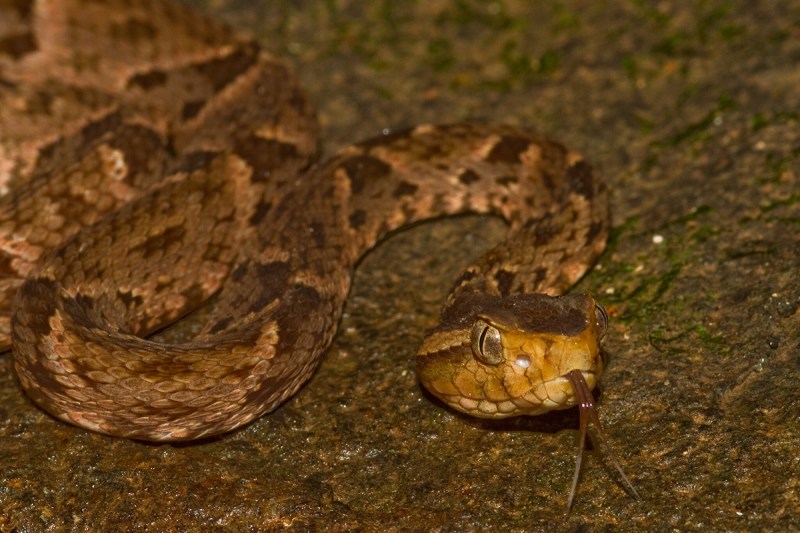
The fer-de-lance pit viper is among the most venomous creatures in the Darién Gap. They’re irritable, fast-moving, and large enough to bite above your knees. Antivenom usually solves the problem if you get bitten. But, if left untreated, the venom can cause local necrosis (death of body tissue), leading to gangrene or, in the worst cases, death.
Conflict journalist Jason Motlagh crossed the Gap in 2016 for a Dateline story. After receiving his group’s antivenom kit and instructions before the crossing, he said, “If one of us is bitten, we have ten minutes to inject the antivenom before death. We can only carry six vials. If a larger pit viper were to strike, the expert concedes no amount of antivenom would be enough to save us. We might as well lie down and smoke a cigarette until the lights go out.”
Drug traffickers and FARC armed guerillas

It’s becoming increasingly difficult to bring drugs into the US, so drug traffickers are turning to other avenues. The lawlessness and lack of residents make the Darién Gap a perfect path for smuggling cocaine and other drugs on their journey from South America.
The Revolutionary Armed Forces of Colombia (FARC) have made a name for themselves since 1964, terrorizing the government and many cities in Colombia. Many from the group have made their home in the lawless jungles of the Darién Gap. A backpacker from Sweden was shot in the head in 2013 and found two years later. Multiple others have been kidnapped for weeks or months after venturing into the Gap.
Since a peace deal in 2017 with the United Nations, the group has reformed into an official political party, but a few thousand rebels still continue with drugs, arms, and human trafficking.
Brazilian wandering spiders
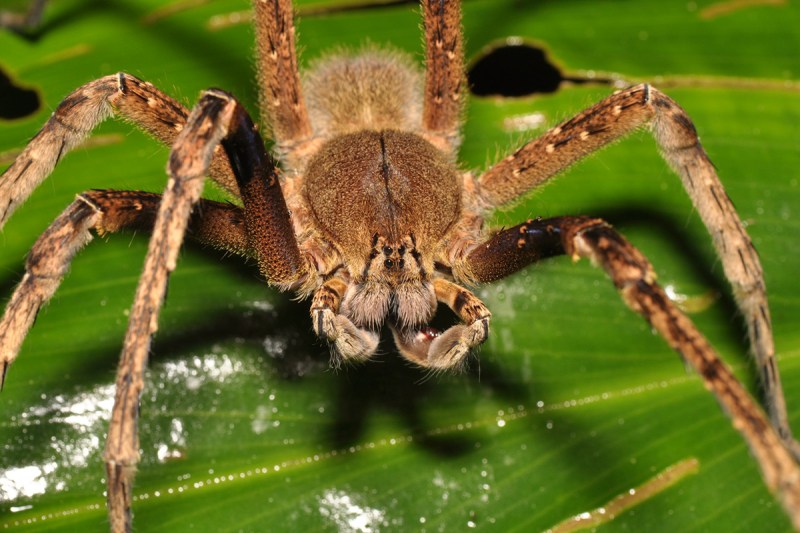
Spiders fill the jungles of the Darién Gap, but one of the most “medically important” is the Brazilian Wandering spider. “Medically important” is the nice term for “you’re going to have a really bad day if this bites you.”
This family of spiders (there are more than one!) has a leg span of five to seven inches. They wander the jungle floor at night and love to hide in people’s hiking boots, logs, and banana plants. They’ve been nicknamed the Banana spider, as that’s often where people run into them. Bites from this spider can put you in the hospital or, from particularly bad ones, cause death in 2 to 6 hours.
Black scorpions

Scorpions look like they’re from another planet. A few species prefer conditions in Colombia and southern Panama and call the Darién Gap home, including the black scorpion. Black scorpions (Tityus pachyurus) can be two to four inches long and have black or reddish-black coloring, which gives them their name.
They live under rocks and logs and hunt for larvae and cockroaches at night. They are part of the thick-tailed scorpion family, giving them their stocky appearance. The sting is very painful but, thankfully, is rarely deadly to humans … as long as you are treated in a safe amount of time.
Jungle heat and dirty water

Even the heat in the jungle can put a serious dent in your mood. Temperatures in The Gap can reach a balmy 95 degrees Fahrenheit with 95% humidity, creating a terrible problem if you run out of water. With trips through The Gap averaging between 20 to 50 days, you had better be prepared to stay well hydrated.
There’s a lot of water in the Darién Gap but it is far from clean. Even a sip can hold a host of viruses or parasites that could ruin the rest of your trip. So, a good water filter is a must.
Spiked chunga palm trees

Many kinds of trees call the jungle home, and the local people make use of all of them. The fiber from the leaves of the Chunga Palm is used to make everything from furniture and hats to jewelry and fishing nets.
Perhaps that’s why this palm has one of the best defenses of any tree in the Gap. Long black spines — up to eight inches long — cover the Chunga to prevent animals from climbing and taking the fruit. Unfortunately for us, these spines are covered in all sorts of bacteria. One brush with a Chunga, and you might find yourself with infected puncture wounds embedded with shards of Chunga spines.
Ticks
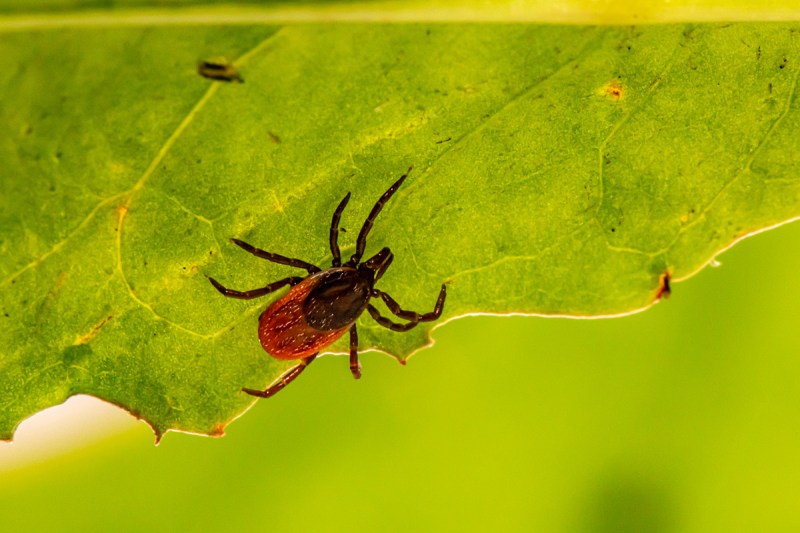
During the mid-eighties, Helge Peterson found himself in Colombia trying to complete a motorcycle tour from Argentina to Alaska. But one small problem stood in his way: The Darién Gap. Convincing a young German backpacker to make the journey with him, they started their journey together. They began the 20-day trek hauling Helge’s 400-pound BMW motorcycle into the jungle, through rivers and ravines.
At the end of each day, tired and broken, Helge and his backpacking partner would set up camp and start the removal of ticks, sometimes several hundred at a time, from their skin and clothing. Ticks in the area can carry Ehrlichiosis or Rocky Mountain Spotted Fever, neither of which you want in the middle of the jungle days or weeks from the nearest hospital.
Trench foot
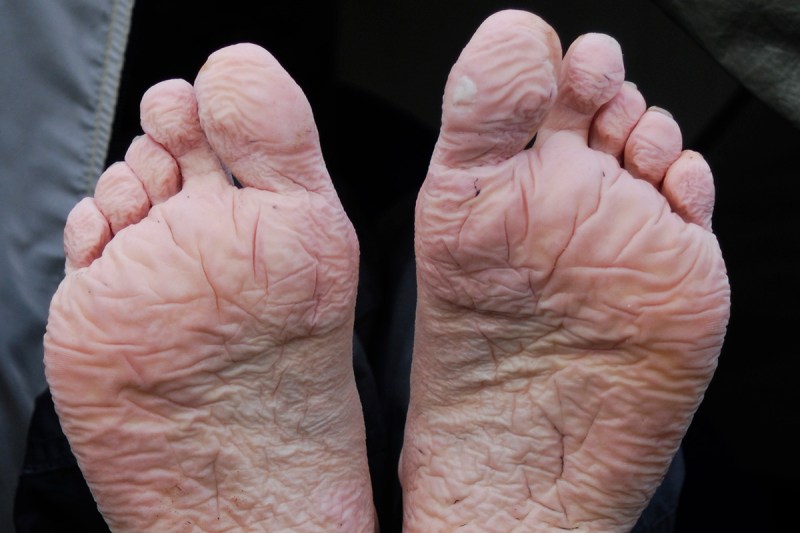
Trench foot was first described during Napoleon’s retreat from Russia in the winter of 1812, but the name references a condition most common during World War I. It starts with persistently wet skin that isn’t allowed to dry. Wet conditions and limited blood flow cause the tissue to tingle or itch, often turn red or blue, and eventually decay. Any open wounds quickly develop fungal infections. With all of this happening in as little as 10 hours, it doesn’t allow much time to fix the problem.
Botflies
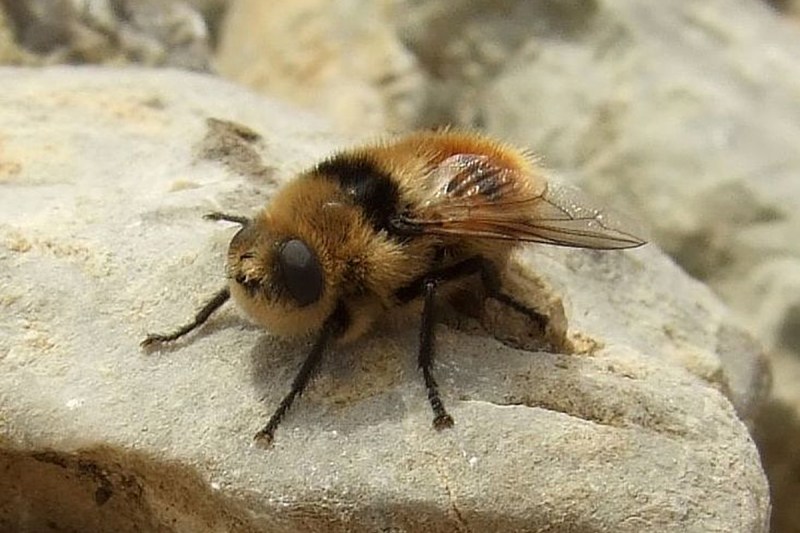
Botflies like to get under your skin, literally. They start by laying their eggs on mosquitos. What do mosquitos like to do? Bite humans. This conveniently deposits the botfly eggs under our skin. They then hatch, and the larvae have a nice, warm place to live.
Through a small hole in your skin, the larva can breathe. They feed on the flesh in their little skin cave and stay cozy and warm. Once they grow into bumblebee-sized adults, they crawl out to lay eggs somewhere else. If there are many larvae involved, it’s called myiasis, meaning an infestation under the skin. Yum. That’s why it pays to pack a very good bug spray.
Cold War bombs

During the Cold War, the U.S. military ran thousands of training missions inside the Darién Gap, dropping bombs over the jungle. Most of them detonated. However, some did not. Those bombs have been covered over by jungle growth and are now hidden on the jungle floor under a thick layer of vegetation. Hundreds, perhaps thousands, of undetonated explosives likely still lie in the jungle, waiting for some poor, unfortunate soul to step off the trail — what little trail is there — just a bit too far and set off a massive explosion.
Crocodiles

The Darién Gap is home to many predators, both human and animal, but one of the most deadly is the American crocodile. Crocodiles are apex predators, with no known natural enemies, and anything that they come in contact with is potential prey. That includes humans.
Crocodiles prefer to hunt at night, but they will attack and eat prey at any time of day. They hide in the water near the edge and wait for an unsuspecting animal (or unlucky hiker) to come to the water, and then the crocodile strikes, dragging its prey under the water to drown before consuming.
Landslides

The above-mentioned article for CFR mentions one Haitian immigrant who struggled in the unyielding rain and wet conditions. “The journey was really quite hard, especially when the rain came. It was just mud, rivers and going up mountainsides nonstop.” In fact, the Gap is among the wettest places on earth, and the intense rainfall can trigger surprise landslides. The worst part is that there is little hikers or travelers through the area can do to protect themselves. It’s just a fact of life — and possibly death — inside the Gap.
So the Darién Gap sounds downright peachy to visit, doesn’t it?



